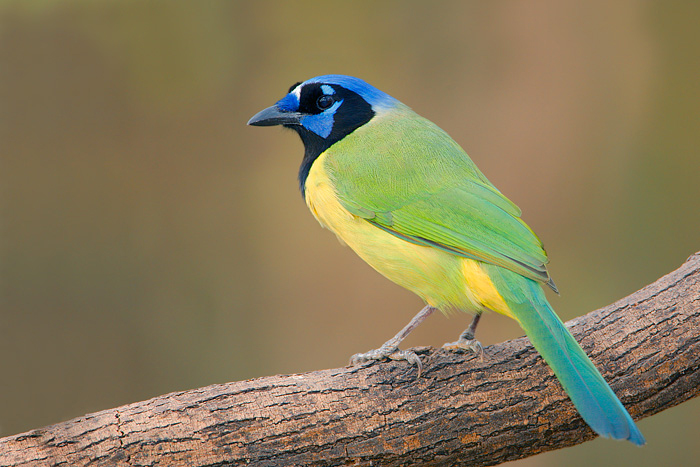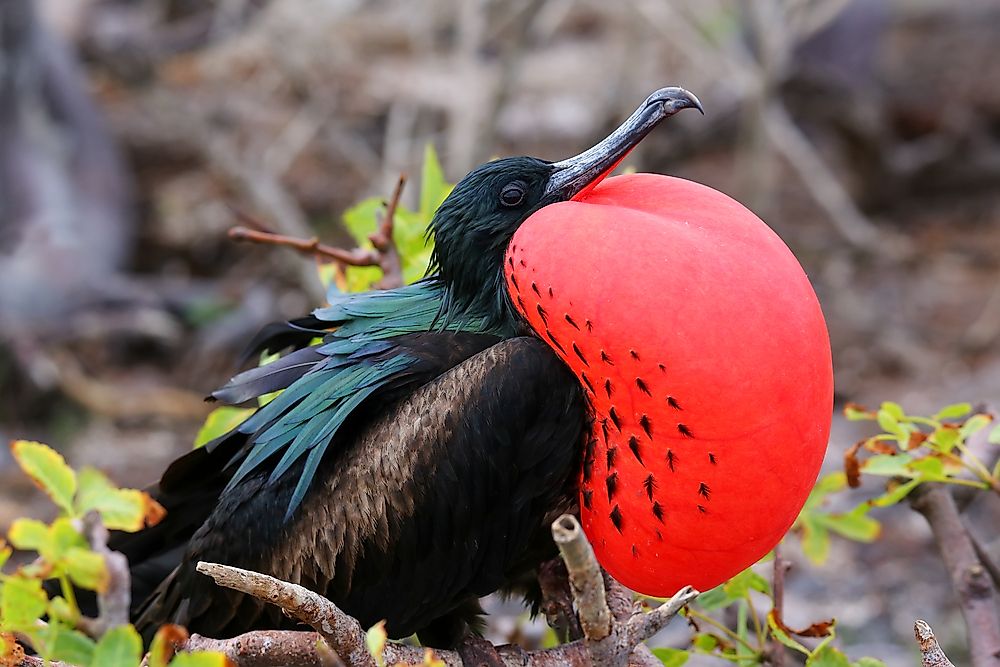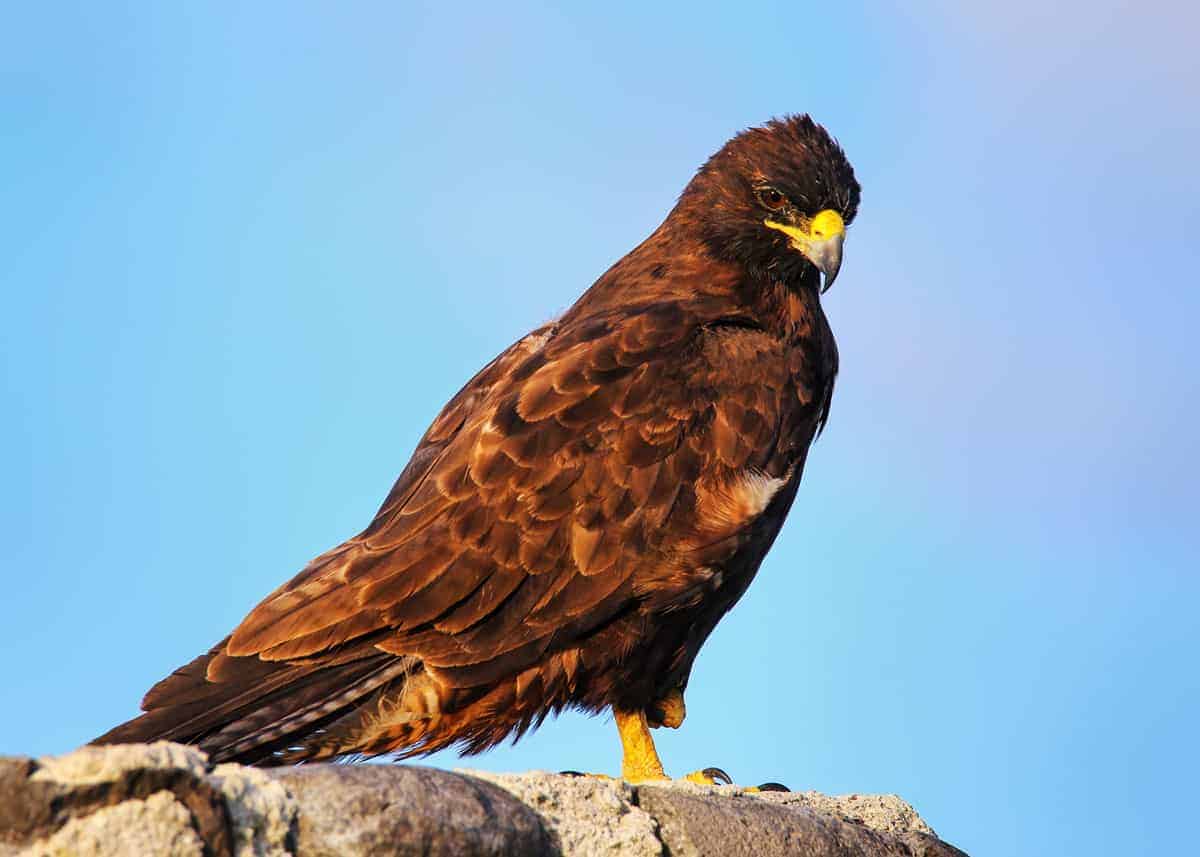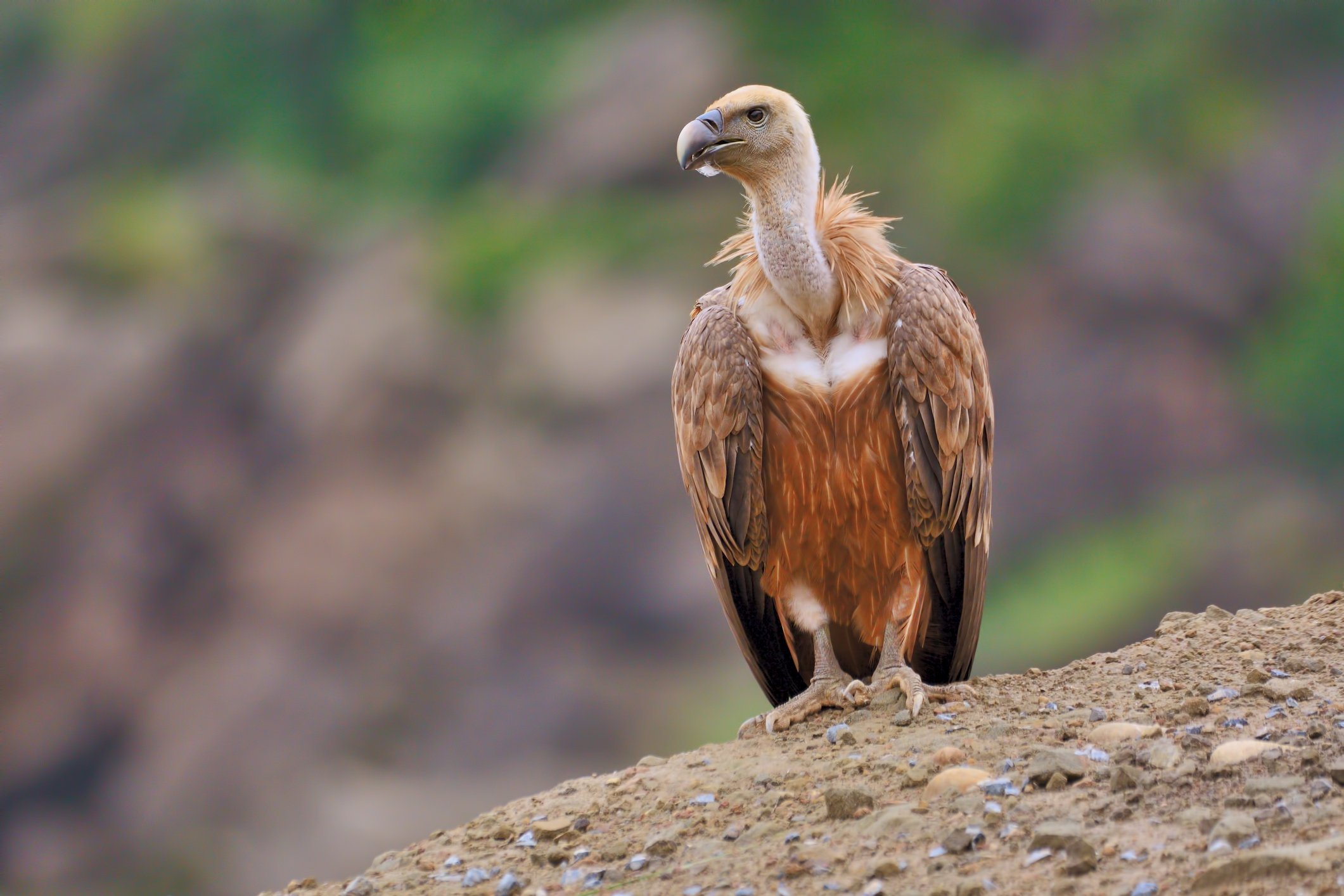There are birds that start with G? Of course, there are! Everyone knows that all the good letters were taken by other birds, so G had to make due with what was left. You might not know this, but there are lots of types of birds out there occupying the letter G.
Here is a list of birds that start with the letter G. G-g-g-gimme some more gimme some more! I don’t know why I just said that, but it stuck in my head for some reason.
Golden Eagle (Aquila chrysaetos)
Golden Eagles have the most widespread population in the entire world. These birds are highly revered in the world of falconry and have quite an unbeatable record.
They’re not only fast and agile but also surprisingly strong, which is why they can prey on various animals and birds.
Golden Eagles display sexual dimorphism in size, with the adult females being larger and heavier than their male counterparts. In appearance, both sexes are quite similar.
They have a dark brown body with golden brown plumage around their nape, which is how they get their name. Their wings are significantly broad, with long and thickly furred legs. The bill of these raptors has a dark tip and is heavily hooked.
Although Gold Eagles live up to the age of 30-40 years in the wild, these birds can even survive for 70 years under ideal circumstances.
Great Blue Heron (Ardea herodias)
Great Blue Herons are the largest members of the Heron family within North America, and the third-largest in the world, after the Goliath and White-bellied Herons.
These wading birds commonly inhabit the wetlands and open water shores across North and Central America.
Despite their magnificent size, their diet primarily consists of small fish. However, being the opportunistic feeders that they are, they will also eat shrimp, crabs, reptiles, rodents, and insects.
Both sexes of the adult Great Blue Herons have an identical plumage; only the males are the larger of the two. They have a mostly white upper body with slate-colored wings and brownish thighs.
Gyrfalcon (Falco rusticolus)

One of the four Heirofalcon species, the Gyrfalcons are the largest falcon species in the world. Just like the Golden Eagles, these raptors also have a significant position in falconry.
Gyrfalcons are usually a resident species found all over North America and Euroserbia. You will often spot these large birds on coasts and islands.
Despite being a falcon species, the Gyrfalcons have a body as large as some of the largest buzzards and have an even higher body mass. Among the adults, the females are significantly larger and bulkier than their male counterparts.
Gyrfalcons occur in several morphs, due to which their plumage can have a lot of variation, particularly black, white, silver, and brown. Among all these, the white morphs are most commonly seen by the birders.
Giant Ibis (Thaumatibis gigantea)

Being the monotypic member of their genus, the Giant Ibises are a large wading bird species that are included in the Critically Endangered Species List by the IUCN.
Giant Ibises generally inhabit lakes, marshes, swamps, flood plains, as well as open and deciduous forests. Like most ibises, their diet also includes crustaceans, amphibians, reptiles, eels, and other invertebrates.
Drainage of wetlands, which is a major habitat preference for them, and large-scale deforestation are major reasons behind their population decline.
True to their name, the Giant Ibises are the largest of all living ibis species globally. These birds have a dark body with a greyish-brown plumage and silver wingtips.
Great Egret (Ardea alba)
While the Great Egrets are the largest egret species, as their name suggests, these birds have many competitors within the heron family. Due to their size and popularity, they’re also referred to as “Common Egrets” and “Large Egrets.”
Great Egrets have entirely white plumage, except for their yellow bill and dark legs and feet. During the breeding season, you might notice the color of their bill darkening, and their legs and feet are lightening. These wading birds are sexually monomorphic.
Gadwall (Mareca strepera)

Found in northern Europe and central North America, the Gadwalls are the dabbling duck family members. These waterfowls are migratory in nature and travel south to Central America in the winter months.
The primary habitats of Gadwalls consist of marshes, open wetlands, and steppe lakes, with plenty of vegetation nearby. They primarily feed on plant matter but will also dive to catch aquatic prey when they get a chance.
Like most duck species, the Gadwalls are also strongly sexually dimorphic. The males have mainly grey plumage, with a black rump and touches of chestnut on their wings.
On the contrary, their female counterparts are mostly brown in color. The males are both larger and heavier than their female counterparts.
Great Horned Owl (Bubo virginianus)
/great-horned-owl-5a42694ec7822d0037f62553.jpg)
Also popular as “Winged Tiger” and “Tiger Owl,” the Great Horned Owls are a large typical owl species endemic to the Americas. These owls have similar nesting habits, prey, and preferred habitats to the Red-tailed Hawks.
Just as their name suggests, Great Horned Owls have prominent ear tufts and a camouflaged brown body with dark barring all over. Their underparts are slightly less barred than the rest of their body. Both sexes appear identical, with the females being larger in size.
In captivity, Great Horned Owls can survive up to 15-20 years.
Green Jay (Cyanocorax luxuosus)

Green Jays are a passerine corvid species that are found throughout Central America. These birds are primarily insectivores but can also eat cereal grains and even human scraps when they get an opportunity.
Like the other jay species, Green Jays are also sexually monomorphic. Their head and throat are colored in blue, with several azure blue bands running across their face. Their back and wings are yellowish-green, with paler undersides.
Shades of blue are also visible on their tail. Although they produce various notes, the most common one is a “rassh-rassh-rassh” sound.
Giant Kingbird (Tyrannus cubensis)
Giant Kingbirds are an endangered species of the tyrant flycatcher family. These birds are native to Cuba but can also be found on other neighboring islands.
Giant Kingbirds are close relatives to the Loggerhead Kingbirds, another species that occurs within their range. They have a greyish head and upper parts with white undersides. Their bill is dark and pointed, coupled with dark eyes.
There is very little data about the sexual dimorphism of these birds. However, considering the fact that all tyrant flycatchers display negligible dimorphism, it’s safe to assume that the Giant Kingbirds follow suit.
Great Frigatebird (Fregata minor)

The Great Frigatebirds are one of the five extant species in the frigatebird family. These large seabirds are common inhabitants on the islands of the Pacific and Indian Oceans.
Great Frigatebirds are migratory in nature and are seen participating in both routine trips as well as infrequent, farther dispersal.
These birds have a large body, narrow, pointed wings, and a deeply forked tail. The adults display significant dimorphism in both size and plumage. The females are both larger and heavier than the males.
Male Great Frigatebirds have an entirely black body with a vibrant red gular sac and green gloss on their flight feathers. On the other hand, the females have a white throat and breast without a gular sac.
Goliath Heron (Ardea goliath)

As their name suggests, the Goliath Herons are the largest living heron species in the world; these wading birds can stand as tall as 5 feet and weigh over 4-5 kilograms.
While all members of the heron family are aquatic, Goliath Herons take it one step further. You will always find them flying waterways, rarely venturing over land. The ideal habitats for them include river deltas, swamps, reefs, and mangrove wetlands.
The adult Goliath Herons are sexually monomorphic, with both sexes appearing identical. They have a crested head and a long pointed grey bill. A chestnut shade extends from their head to their neck.
Below the neck, a grey streak band runs to their legs. The upper parts are greyish, with chestnut underparts.
Green Kingfisher (Chloroceryle americana)
The Green Kingfishers are small kingfisher species that are commonly found in Central and South America. Within the United States, you can notice these little birdies in the southern parts of Texas.
The adult Green Kingfishers display a significant sexual dimorphism. The males are heavier than their female counterparts and have olive-green heads and upperparts, with white markings on their wings and tail. They also sport a chestnut band on their chest and green spottings on the flanks.
On the other hand, the females have buff-white underparts with a green chest band.
Greater Sooty Owl (Tyto tenebricosa)

The Greater Sooty Owls are a moderately-sized typical owl species that inhabit the south-eastern regions of Australia. The Lesser Sooty Owls are often regarded to be conspecific with these owls, which is why they’re referred to as “Sooty Owls” together.
Although both sexes of the Greater Sooty Owls are quite similar, the females are larger in size and have a lighter plumage. The adults have a large, sooty facial disk with dark eyes; their upper parts are dark, with lighter underparts.
Greater Sooty Owls have a short tail and feathered legs. They live about 15-20 years on average but are threatened by automobile collisions.
Gull-billed Tern (Gelochelidon nilotica)
The Gull-billed Terns are a large tern species with a widespread distribution throughout Europe, Asia, and the coasts of North and South America. A large part of their population is migratory and travels to Africa, New Zealand, and southern parts of Asia.
As you can gather from their name, these terns have a short and thick bill, just like that of the gulls. They also have a robust body coupled with long legs and broad wings. Both sexes appear identical and display minimal sexual dimorphism.
In appearance, these terns resemble the Sandwich Terns to some extent. They have an overall white body with a black head cap and grey wings. During winters, their head caps become slightly paler.
Gray Catbird (Dumetella carolinensis)
The Gray Catbirds are the monotypic members of their genus. These birds are endemic to the Americas and belong to the mimid family. Within the United States, you can spot them in the southwestern regions.
Just as their name suggests, the Gray Catbirds have a slaty-grey body with dark touches of black on their head, wingtips, and tail. Both sexes are identical and display sexual monomorphism.
In some regions, Gray Catbirds are also referred to as “Slate-colored Mockingbirds.”
Glossy Ibis (Plegadis falcinellus)

The Glossy Ibises are the most widespread ibis species in most parts of the world. Although these ibises are not migratory in nature, they are highly nomadic and have a tendency of dispersing right after the breeding season.
Glossy Ibises have a sickle-shaped bill and have a dark, rufous-colored body, with darker wings and underwings. There is little data about their sexual dimorphism.
Golden-fronted Woodpecker (Melanerpes aurifrons)
Closely related to the Yucatan Woodpeckers, the Golden-fronted Woodpeckers are a North American woodpecker species that commonly inhabit the tropical rainforests, mesquites, and riparian woodlands.
Within the United States, you can spot these woodpeckers throughout Texas and Oklahoma. They ideally build their nests in tall trees, particularly in oak and pecan trees.
The wings and tail of Golden-fronted Woodpeckers are streaked with black and white. The rest of their body, including head and underbody, is pale greyish in color, with touches of golden and red on their head, above the bill, and on their nape.
Greater Kestrel (Falco rubicoloides)
Being one of the largest kestrel species worldwide, the Greater Kestrels are an African raptor species. Because these raptors are well-adapted to dry regions, you will often spot them in semi-deserts, savannahs, and grasslands.
Greater Kestrels have a compact body with a long tail that turns slightly upwards and a short, hooked bill with a yellow base and grey tip. Their entire body is golden-brown in color, with black bars scattered all over. These kestrels are sexually monomorphic.
Green Hermit (Phaethornis guy)
Commonly found in parts of South America and the Caribbean, the Green Hermits are a large, non-migratory hummingbird species. Like other hummingbird species, these birds are primarily nectarivores but also go after small insects occasionally.
Green Hermits display sexual dimorphism. TheThe males have a dark green body with a bluish touch to their rump. The tips of their wings and tails are dark, just like their bill.
On the other hand, their female counterparts have a sooty-grey body. They also possess a longer tail and bill than their male counterparts.
Galapagos Hawk (Buteo galapagoensis)

Just as their name suggests, the Galapagos Hawks are a vulnerable raptor species that are native to the Galapagos Islands. The main threat to their population is due to human interference in their natural habitat.
In size, Galapagos Hawks are similar to the Swainson’s and Red-tailed Hawks. However, in body mass, they’re heavier than these species.
The body of these hawks is sooty-brownish in color, with buff underparts covered in brown spots. They are sexually monochromatic, but the females are heavier than their male counterparts.
Grey Plover (Pluvialis squatorola)
Grey Plovers are a migratory plover species found in the Arctic regions. These plovers have white upperparts with a darker underbody, which leads them to their name, “Black-bellied Plover.”
Being wading birds, Grey Plovers are found inhabiting coastal regions. Therefore, their diet includes marine life, such as mollusks, crustaceans, and other aquatic insects.
Grey Teal (Anas gracilis)

Although the Grey Teals have “grey” in their name, their body is covered mainly in a greyish-brown shade. These waterfowls belonging to the dabbling duck group and are found in Australia.
The crimson eyes of Grey Teals are often used as a major field identification mark by the birders.
Both sexes of these mottling brown ducks share similar plumage. These birds are highly vocal, particularly throughout the night; the males are quieter than their female counterparts.
Great Cormorant (Phalacrocorax carbo)
Colloquially known as the “Black Shag,” the Great Cormorants are large seabirds found on the Atlantic coasts of North America and Australia. These birds have entirely black plumage, except for their bill and wing markings.
The adult males are both larger and heavier than their female counterparts, but there are no major differences in plumage.
Golden Tanager (Tangara arthus)
Just as their name suggests, the Golden Tanagers are a brightly colored tanager species found across South America. These birds are colored in golden-yellow entirely, except for their black bill, eyes, cheek patches, and wing bars.
Griffon Vulture (Gyps fulvus)

Also referred to as the “Eurasian Griffon,” the Griffon Vultures are large scavengers found in Asia and Europe. These birds have white faces, broad wings, and short tails. Both sexes have identical plumage; only the females are heavier than their male counterparts.
Green Mango (Anthracothorax viridis)
Just like the Green Hermits, the Green Mangoes are also a large hummingbird species. However, these hummingbirds are native to the Puerto Rico islands, where they are found almost exclusively.
They preferably inhabit mountainous regions, particularly interested in the coffee plantations.
Green Mangoes have a dark green head and upperparts with purplish-blue fan-like tails and wings. Both sexes appear similar; only the females have a lesser sheen, along with white wing and tail tips.
Groove-billed Ani (Crotophaga sulcirostris)
Belonging to the cuckoo family, the Groove-billed Anis are long-tailed, tropical bird species in the Americas. These birds have glossy black bodies, including their eyes, bill, and legs. They’re omnivores and consume a mixed diet of insects, fruits, and seeds.
Conclusion: Birds That Start With G
If you’ve ever tried looking for the answer to why some birds start with the letter G, I hope this article gave you some sort of insight.
Regardless of what type of bird left the G-shaped mark in your yard, next time you see a bird defecate near your house, you’ll probably exclaim “Oh, look at that! A [bird] [that starts with the letter G] just shat on my [house].”
If you read all this, I applaud you. There’s so much more to read out there on the internet. But why go there when you can read it here, safe and sound?
Birds By Alphabet (A-Z List)
Birds that Start with A
Birds that Start with B
Birds that Start with C
Birds that Start with D
Birds that Start with E
Birds that Start with F
Birds that Start with G
Birds that Start with H
Birds that Start with I
Birds that Start with J
Birds that Start with K
Birds that Start with L
Birds that Start with M
Birds that Start with N
Birds that Start with O
Birds that Start with P
Birds that Start with Q
Birds that Start with R
Birds that Start with S
Birds that Start with T
Birds that Start with U
Birds that Start with V
Birds that Start with W
Birds that Start with X
Birds that Start with Y
Birds that Start with Z














